This is not an abstract painting at all, as you might think after the first glance at this photo. This is the bark of rainbow eucalyptus, an unusual tree from New Guinea. Rainbow eucalyptus got its name due to the unique property of wood, which, depending on the seasons, age and thickness of the tree, has different color shades of fibers.
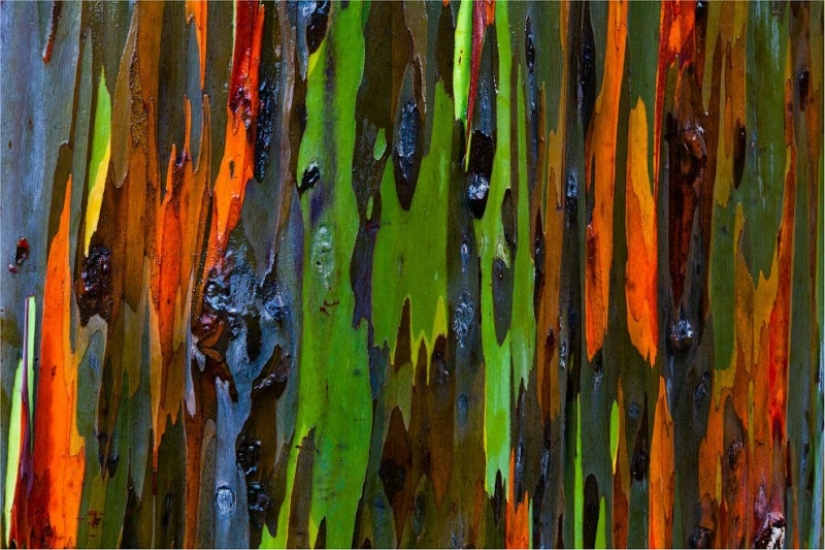
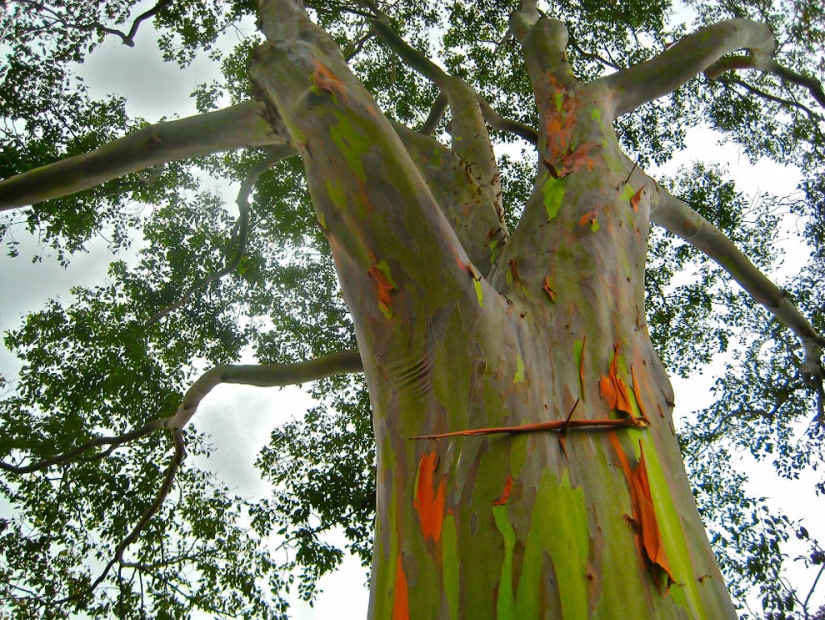
Eucalyptus is usually associated with Australia and funny koalas eating its leaves, but in the tropical rain forests of the Northern Hemisphere, no less remarkable trees from the genus eucalyptus grow, the bark of which is colored with all the colors of the rainbow. For its elegant trunk, the tree was named Rainbow eucalyptus (Latin Eucalyptus deglupta).
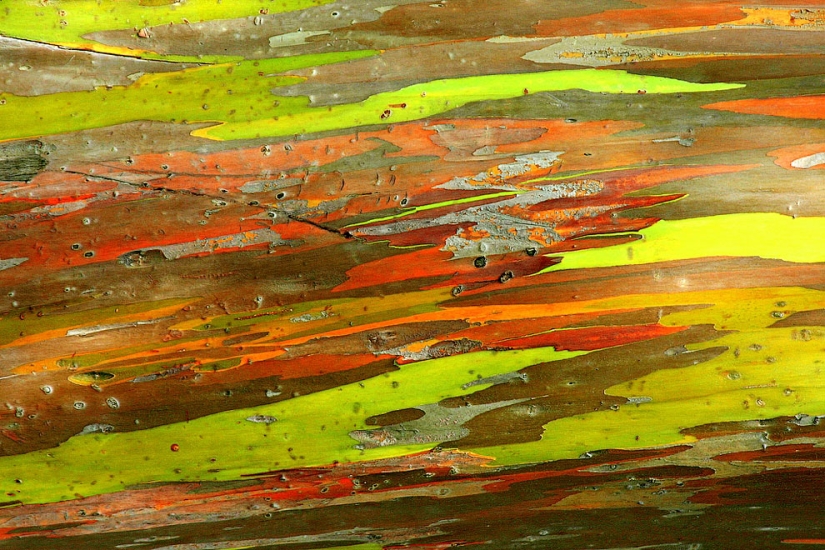
The birthplace of the rainbow eucalyptus is the Philippine Islands, in particular the island of Mindanao. Another name of the rainbow eucalyptus is associated with the name of the island - Mindanao Gum. Rainbow eucalyptus also grows on the Hawaiian Islands, where it was introduced in 1929, as well as in South Florida.
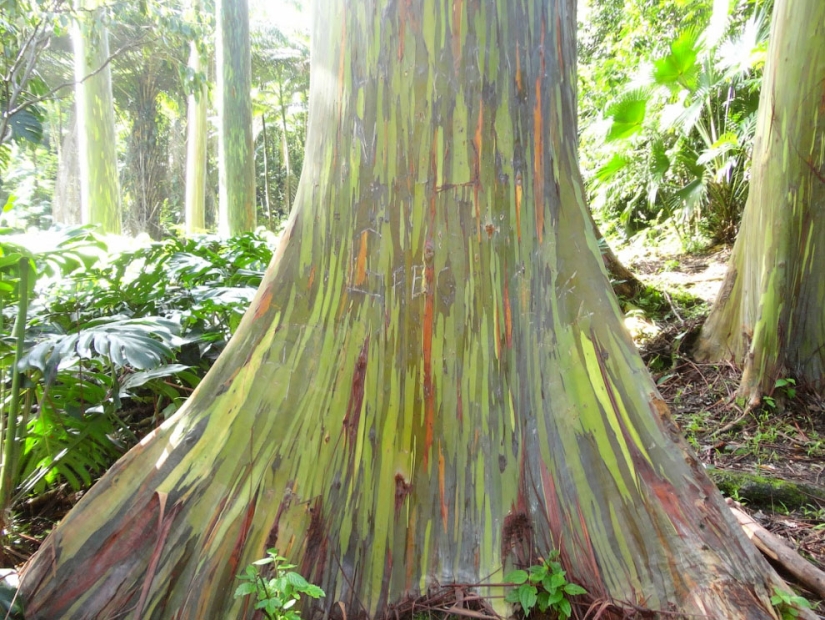
Rainbow eucalyptus is a tropical tree. At home, it grows very quickly, reaching a height of 70 m. In the conditions of South Florida with cooler winters, rainbow eucalyptus grows more slowly, only in summer showing the full force of its growth — increasing by 2.5 - 3 m during the growing season and even more with good care. Eucalyptus leaves are renewed throughout the year.
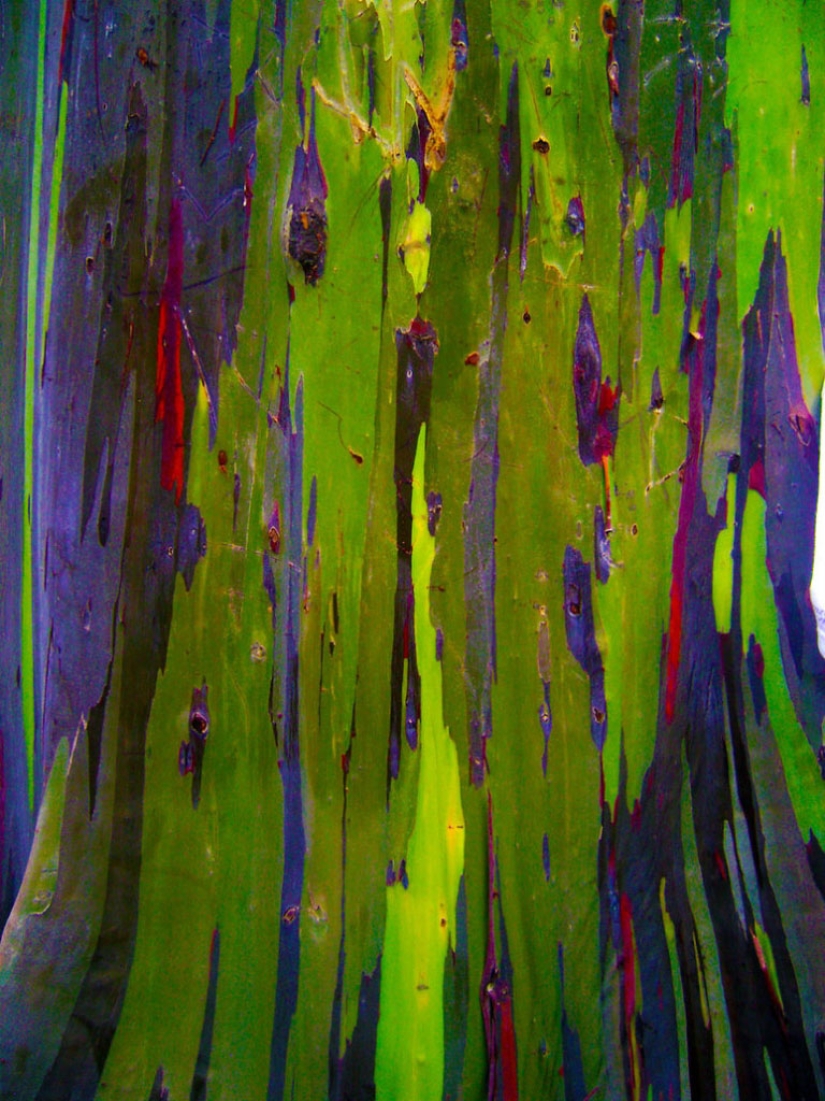
The upper layer of the rainbow tree bark is also renewed annually. Moreover, it is updated in different sections at different times.
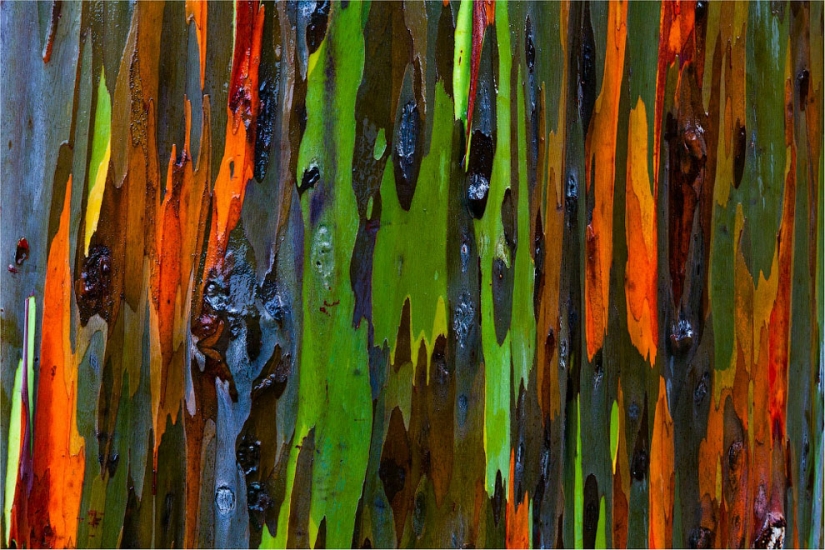
The young bark has a bright green color. Then, over time, it darkens and acquires blue, purple, orange and maroon shades. Just before the detachment, the area of the bark becomes brownish-brown.

Sections of young and old bark alternate, forming a bizarre rainbow pattern, which also changes all the time, representing a sample of living abstract painting.
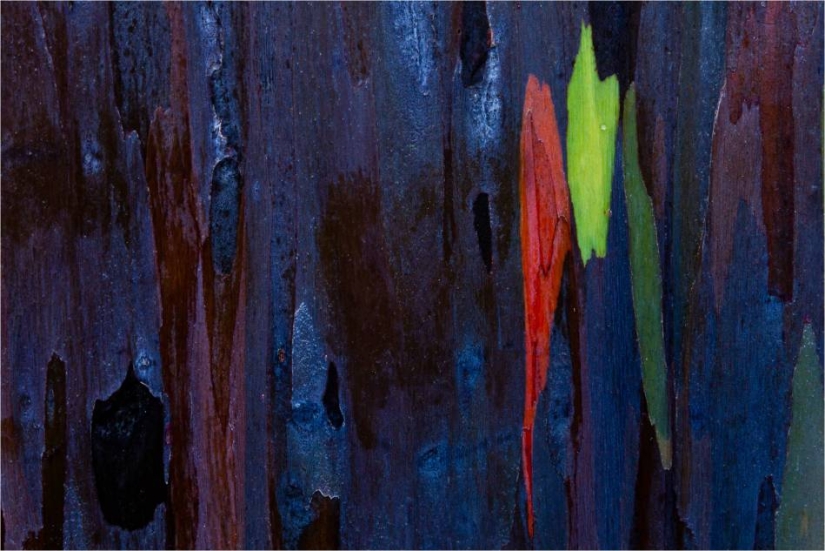
Thus, the different colors of the bark areas indicate its age.
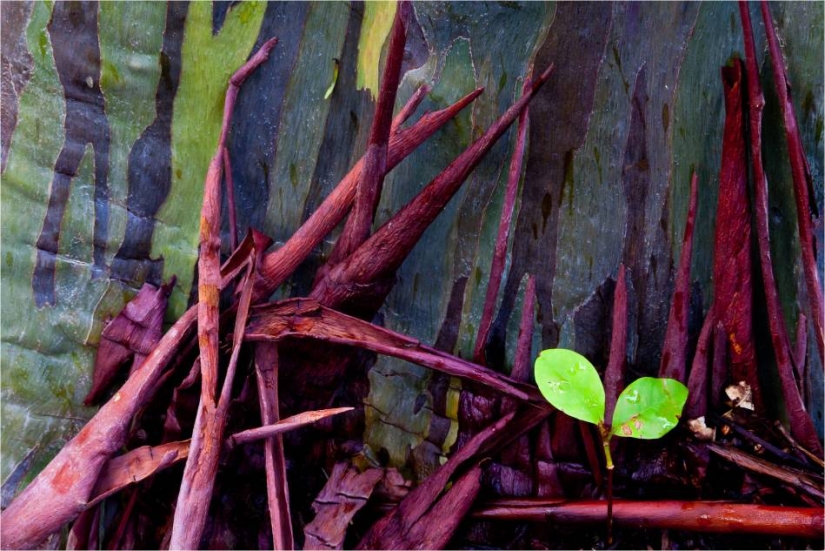
This tree is grown for decorative purposes, because of the beauty of the multicolored stripes that cover the trunk, but in addition to beauty, rainbow eucalyptus has a number of valuable qualities.
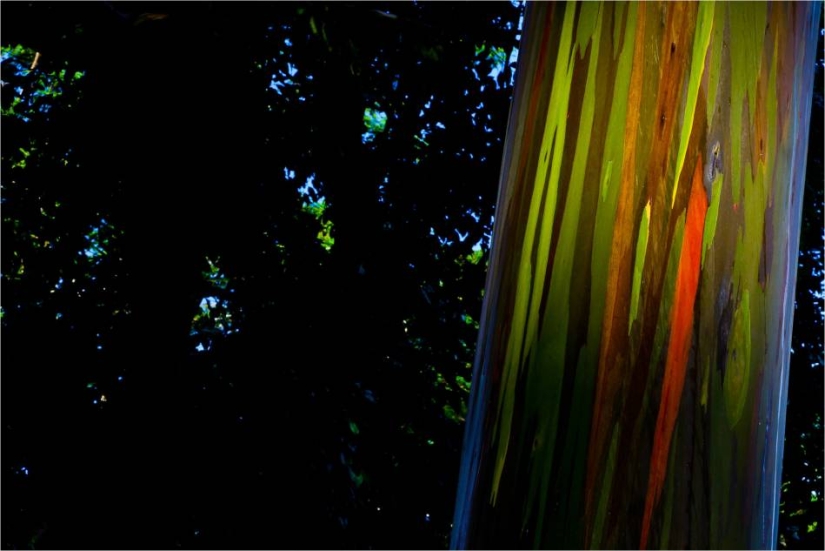
Rainbow eucalyptus trees are rarely damaged by diseases and pests, which allows them to be grown practically without the use of chemical means of protection.
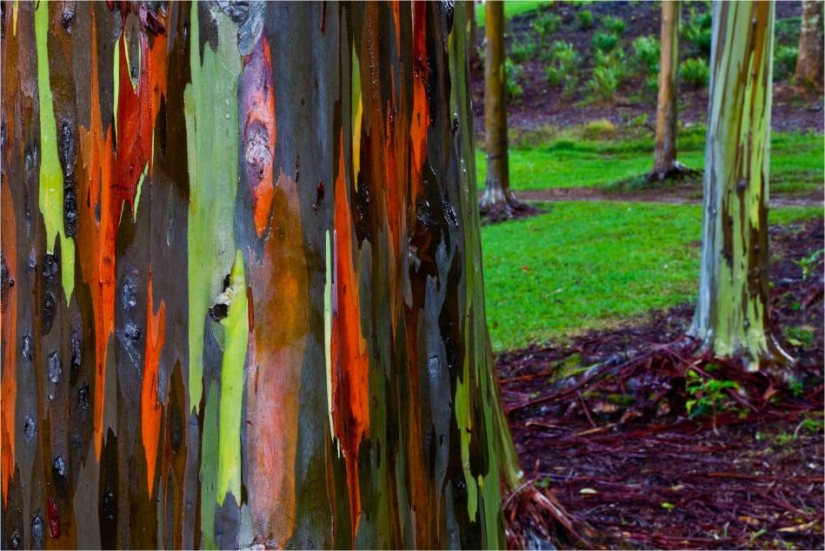
Another feature of rainbow eucalyptus trees is that they do not produce essential oil, unlike other representatives of the genus eucalyptus, so it is used with pleasure in landscaping where the absence of strong aromas is important.
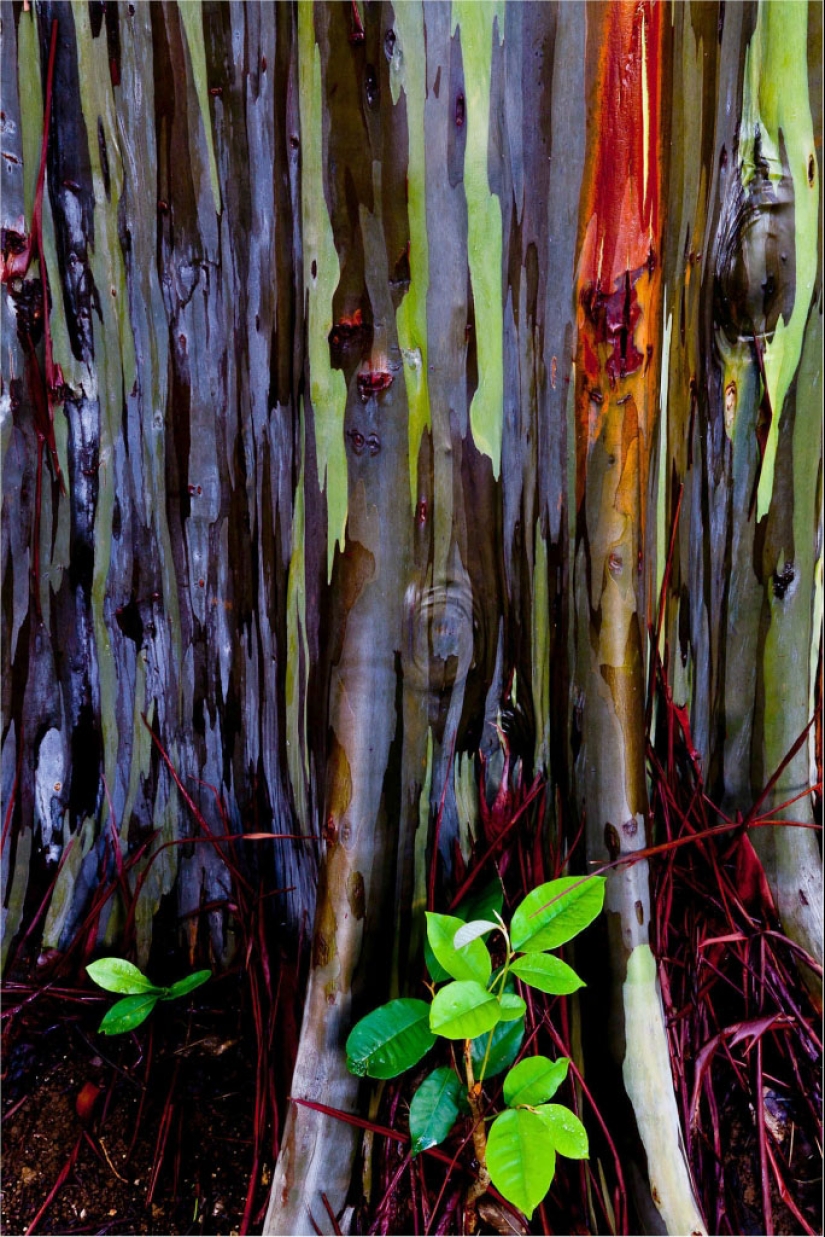
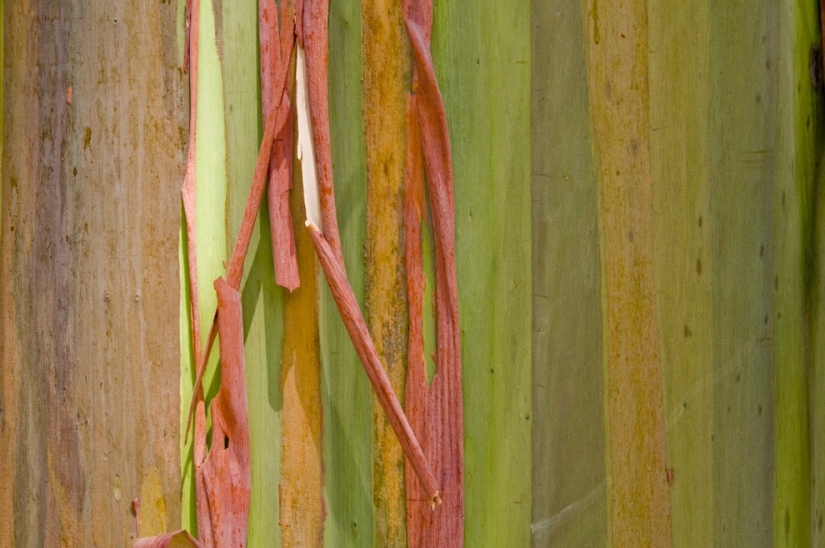
It would seem that such an unusual tree should be protected by the state, but in fact it is not so at all. Rainbow eucalyptus trees are used for the most trivial purposes: for the production of high-quality white paper.
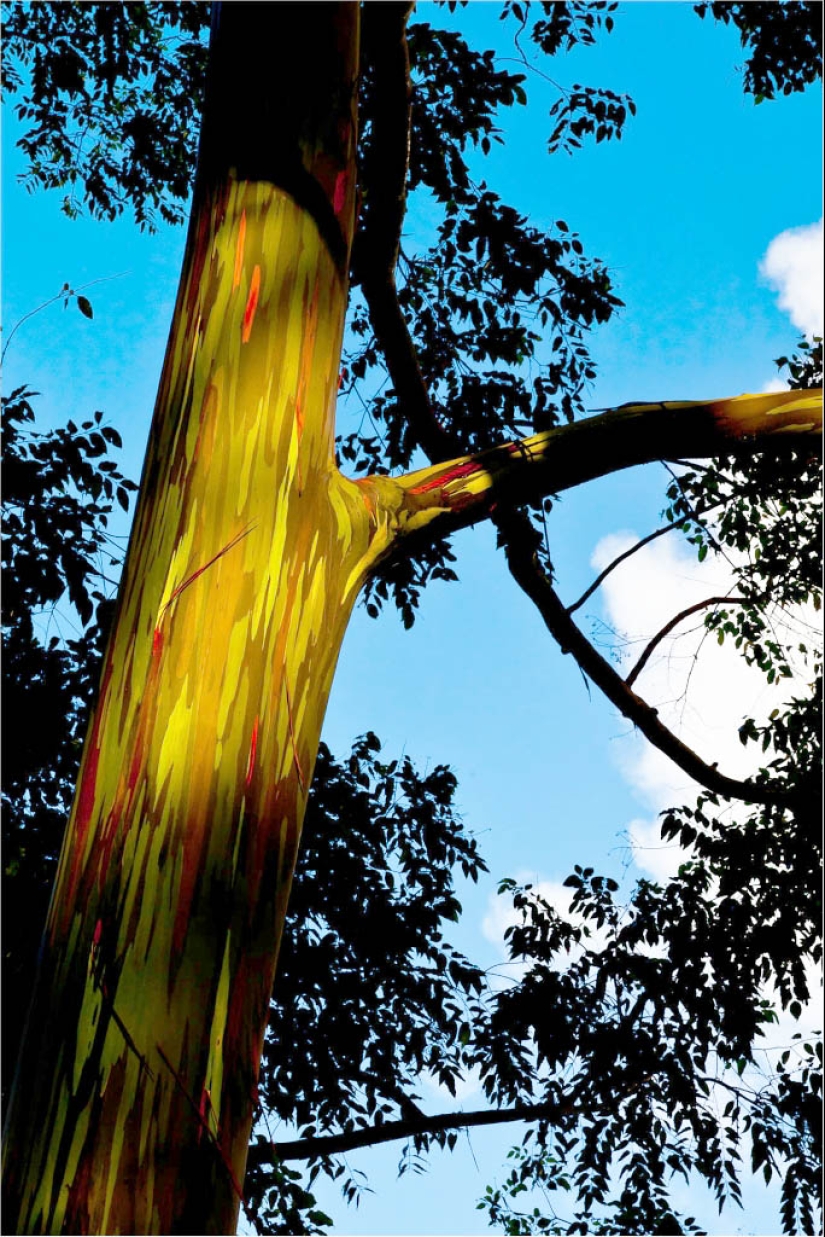
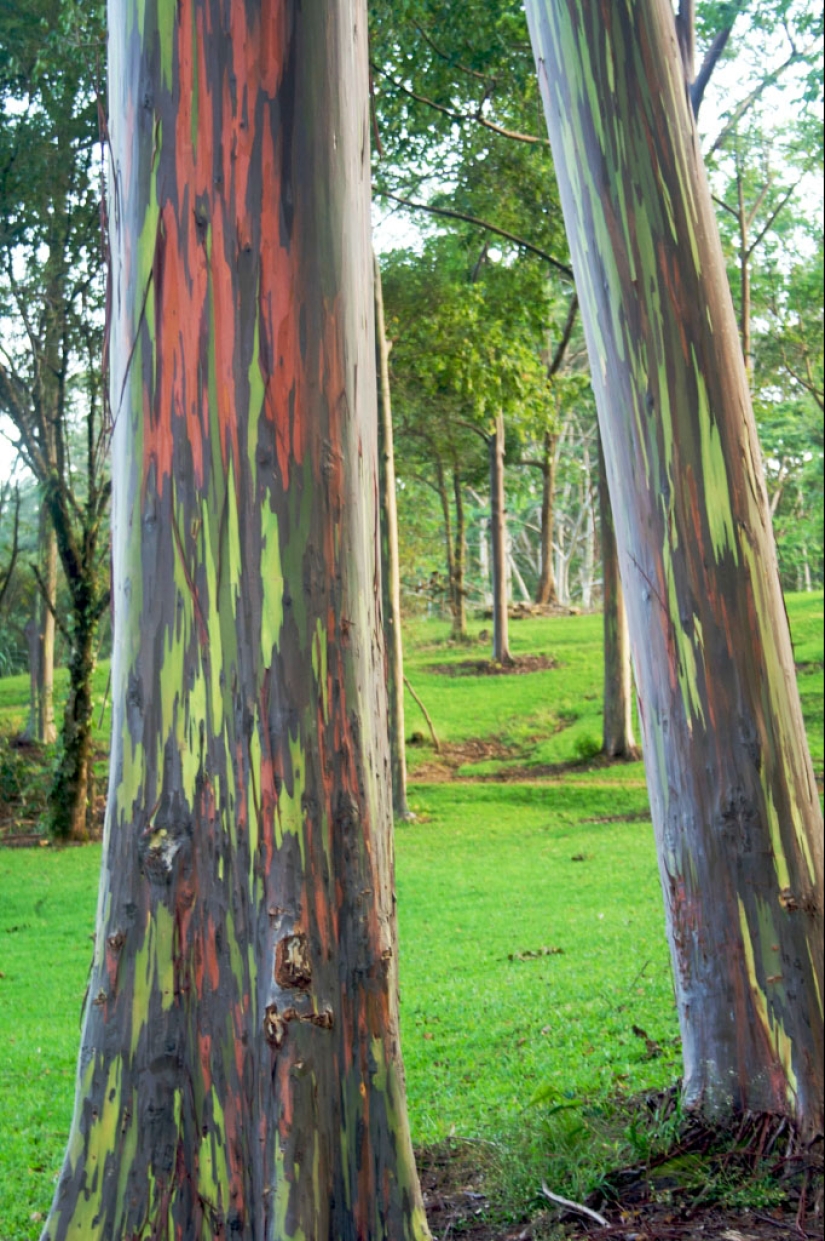
From a distance, the tree does not seem so beautiful, the colors are mixed and one incomprehensible color is obtained, but near the trunks of rainbow eucalyptus trees seem to have come out of the paintings of impressionist artists.
Recent articles

Leonardo da Vinci was accused of being fond of orgies. William the Conqueror, despite all his successes, was called a "Bastard" ...

Modesty? Decency? A sense of tact? No, you haven't heard! Just look at what the people from the selection below are doing! No ...

American documentary photographer Bruce Davidson came to the UK in 1960 for a couple of months on the assignment of Queen magazine. ...